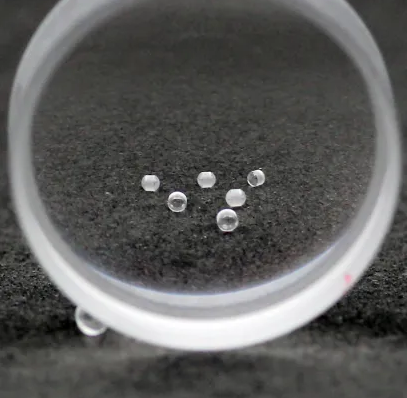What Are Holographic Optical Glass Components?
Holographic optical elements (HOE) are optical elements made based on the principle of holography. Usually done on photosensitive film materials. Its function is based on the principle of diffraction and is a diffractive optical element. Unlike ordinary optical elements, which are made of transparent optical glass, crystal or organic glass, their functions are based on the laws of refraction and reflection of geometric optics. Holographic optical elements mainly include holographic lenses, holographic gratings, holographic filters, holographic scanners, etc.
Characteristics of holographic optical elements:
1. The holographic optical element is a thin film system, so it has the advantage of being light in weight;
2. Since multiple holograms can be recorded on the same negative, spatially overlapping holographic optical elements can be obtained;
3. The imaging characteristics change with wavelength, so there is a large color difference;
4. Because it is a diffractive optical element, it cannot obtain a large field of view and a large exit pupil at the same time;
5. It cannot provide the function of a system alone. For example, a telescope hologram cannot provide angular magnification.
From the above characteristics, we can see the advantages and disadvantages of holographic optical elements. At the same time, we can know that it cannot completely replace general optical elements and can only be used in optical systems at the same time. Holographic optical elements are generally superior when used with monochromatic light or narrow spectral bands.
Introduction to some holographic optical components:
1. Holographic lens
Holographic lenses are holograms produced by the interference of two spherical waves or the interference of a plane wave and a spherical wave. There are two types: coaxial and off-axis. It can converge or diverge light waves and act as a lens. It is actually a Fresnel zone plate or a deformed Fresnel zone plate (see Fresnel diffraction). There is aberration, which is caused by the deformation of the recording medium before and after processing, the change of wavelength during reproduction and the reset accuracy. Holographic lenses can also be made using computer methods. It has the advantages of light weight, low cost and easy reproduction. However, the aberration is larger than that of ordinary lenses, and chromatic aberration is difficult to overcome. It cannot replace ordinary optical lenses, but it can complement each other and complete some special functions. HOE is usually used in laser or quasi-monochromatic light optical systems, such as compensation lenses for compensating optical system aberrations, large-diameter collimating objectives, large relative aperture lenses, etc. Multiple holograms can be recorded on the same holographic dry plate, and one HOE can have the functions of multiple ordinary optical elements. For example, the holographic lens has both imaging and image transfer functions. Sometimes it is necessary to realize the segmentation and combination of lenses so that one target can produce multiple separate images. This function can be easily achieved by using HOE.
2. Holographic grating
Holographic grating is a hologram produced by the interference of two coherent plane waves. Compared with carved gratings, holographic gratings do not have periodic errors and therefore do not produce "ghost lines". It has the advantages of less stray light, high resolution, large effective aperture, wide applicable spectral range, and easy production. In addition to planar gratings, concave holographic gratings can also be produced. This grating is not only used for light splitting, but also has collimation and focusing capabilities. When used in a spectrometer, a grating spectrum can be generated without any additional optical system.
3. Holographic filter
Holograms can record the amplitude and phase of specific wavefronts, usually have complex transmittance, and can be used as holographic filters in coherent optical information processing systems. Placed in the spatial frequency plane, the amplitude and phase relationship of each frequency component in the input spectrum can be changed. For example, it is used as a matched filter in optical feature recognition to achieve correlation recognition.
4. Holographic Scanner
A holographic scanner is a hologram obtained by photography but in most cases is generated by a computer. Usually, a recording medium is divided into several equal parts, and each small part is a hologram obtained by superposing two beams of coherent light required. During reproduction, a known beam of light is used to illuminate the hologram, and at the same time, the hologram is moved according to a certain rule, and the reproduced light will be obtained at a predetermined position, and as the hologram moves, the direction of the reproduced light is constantly changing, so it is also Call it a holographic light deflector.


